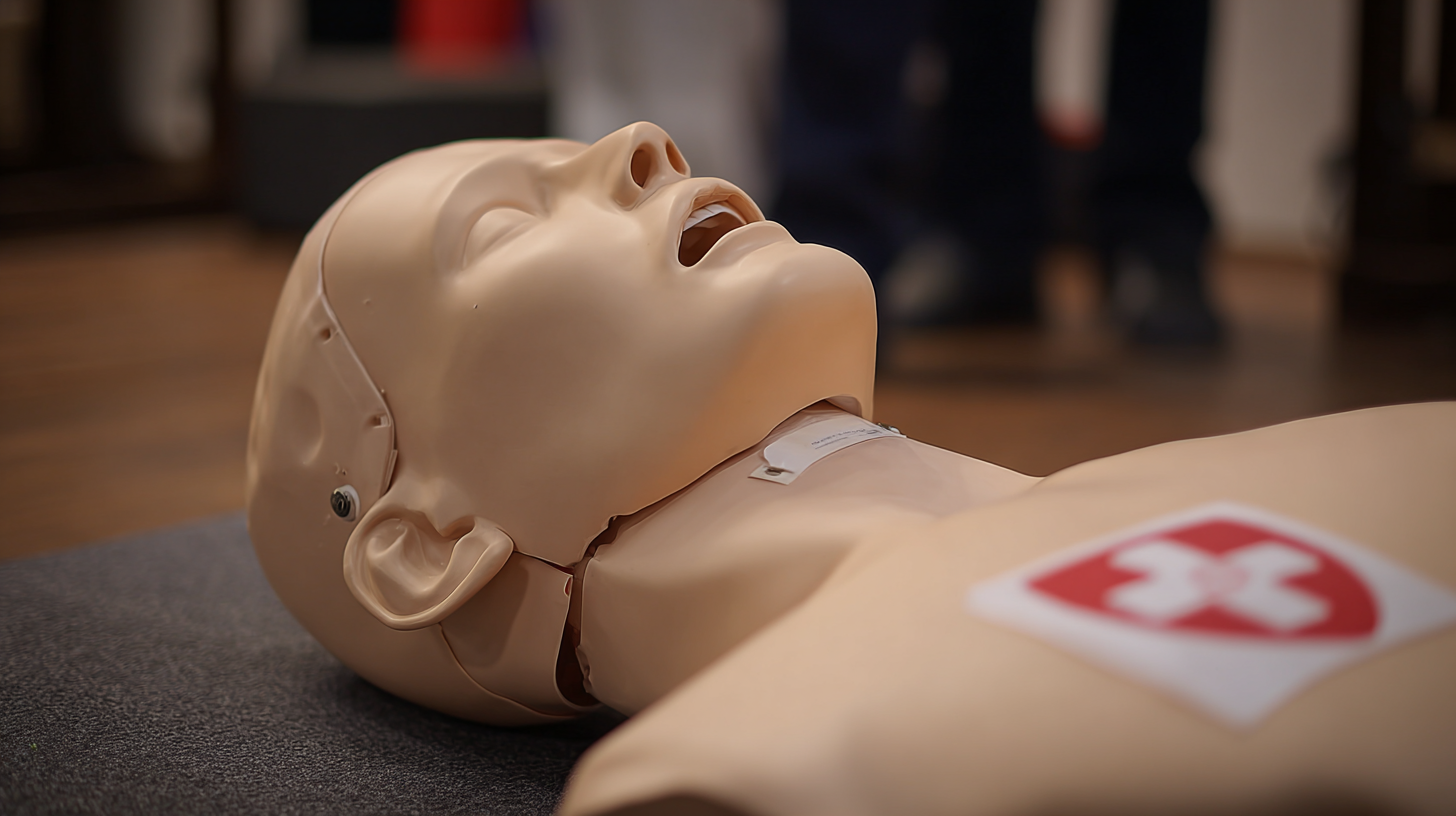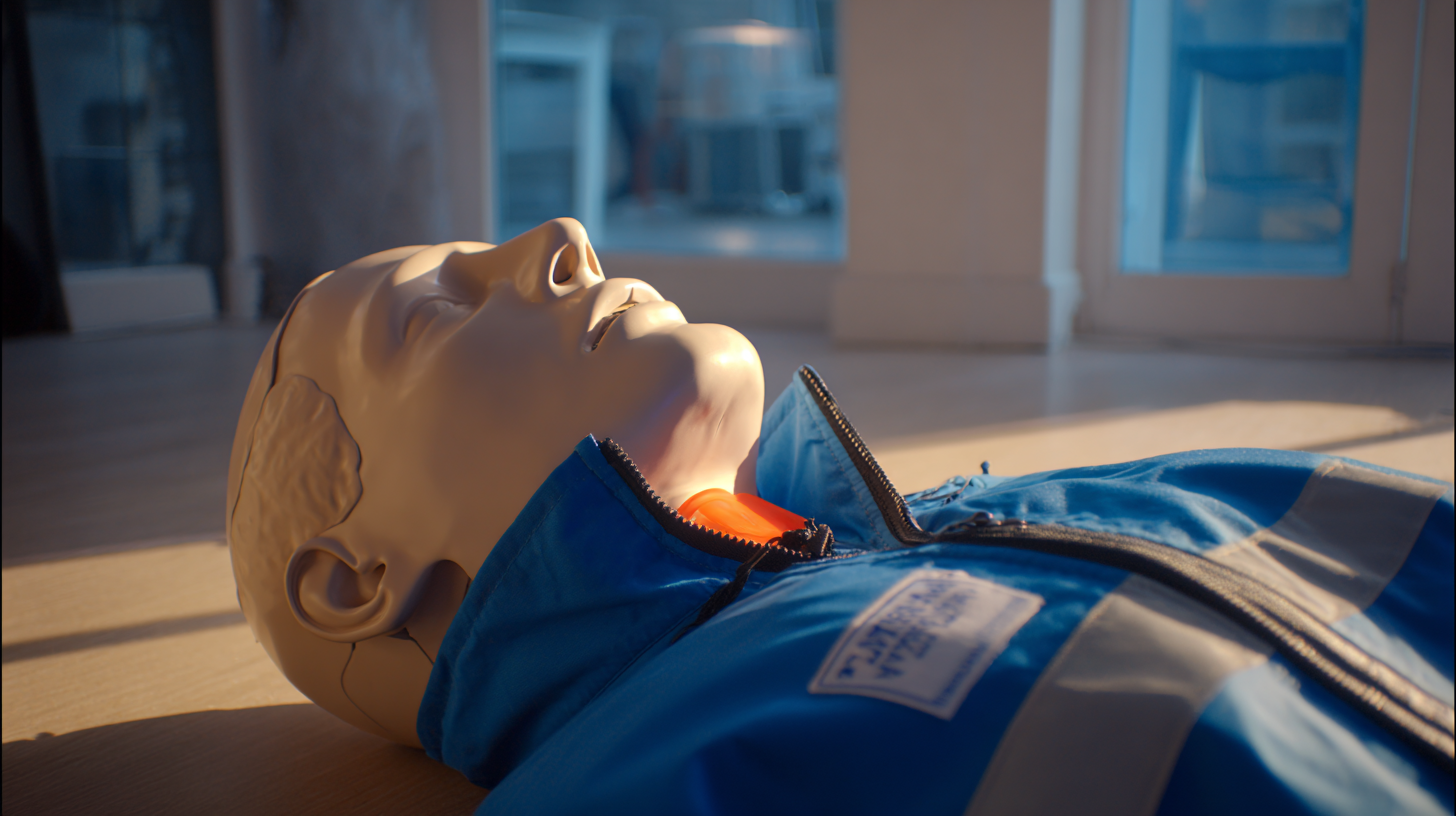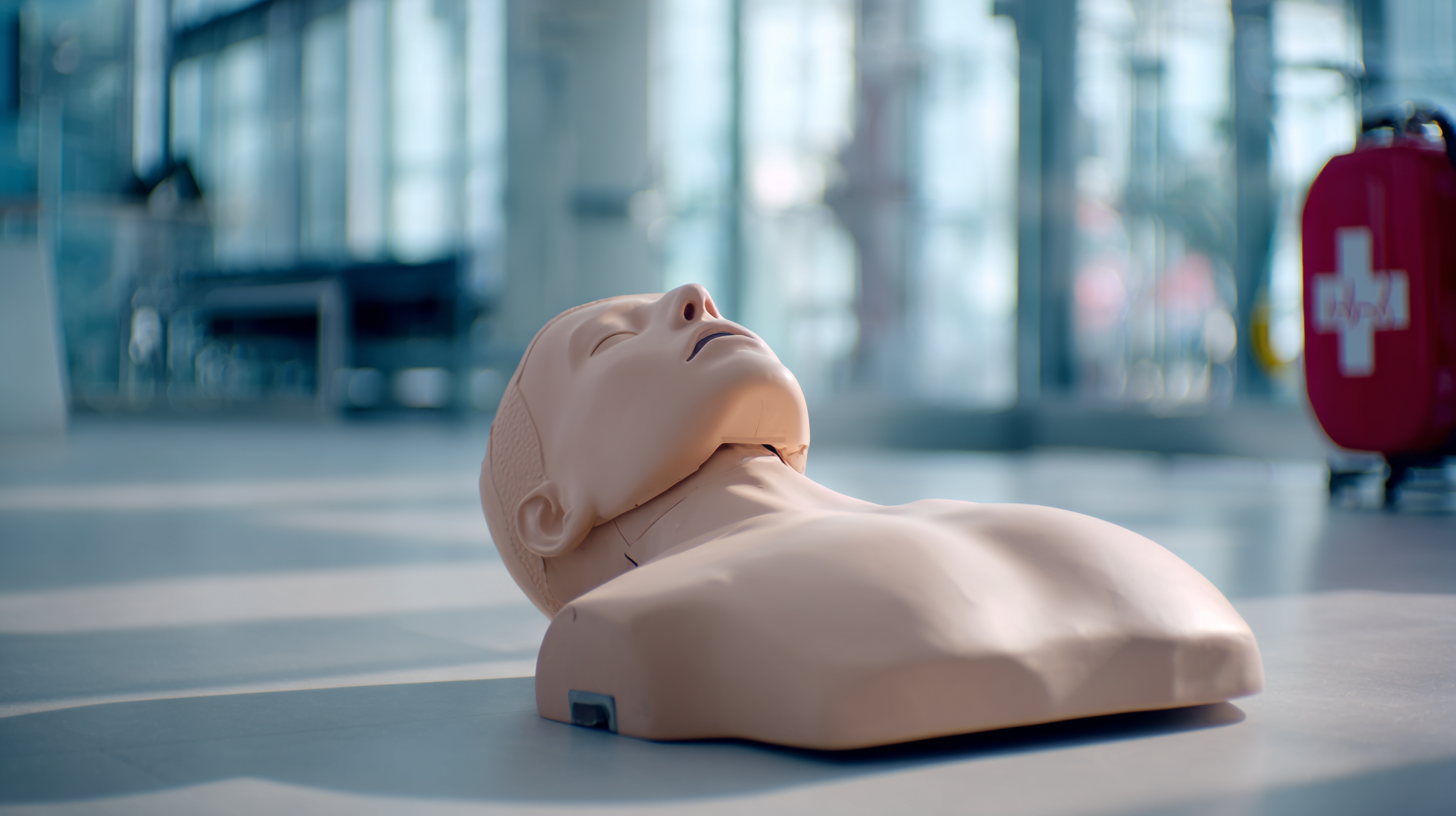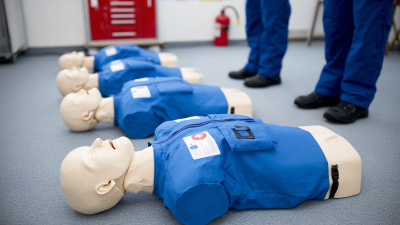In the realm of emergency medicine, effective CPR training is crucial, and the choice of the right dummy for CPR practice can significantly influence skill acquisition and retention. According to the American Heart Association (AHA), immediate CPR can double or triple a victim’s chance of survival after cardiac arrest, emphasizing the importance of realistic training scenarios. A well-designed CPR training dummy not only simulates human anatomy but also provides feedback for practitioners to refine their techniques. Research indicates that dummies equipped with real-time feedback mechanisms can enhance learner engagement and promote better recall during actual emergencies. As the demand for CPR training continues to rise, with an estimated 350,000 cardiac arrests occurring outside of hospitals annually, selecting an appropriate dummy for CPR becomes an essential step in preparing both individuals and health professionals to respond effectively in life-threatening situations.

 When selecting a CPR training dummy, it is crucial to understand the different types available on the market and their design implications. Recent research highlights a significant design flaw in most CPR mannequins: a staggering 95% are flat-chested, which poses risks for effective training. Manikins intended for adult CPR typically reflect a male torso, neglecting female anatomical differences, potentially putting women’s lives at risk during real-life scenarios. The importance of utilizing manikins that accurately represent diverse body types cannot be overstated.
When selecting a CPR training dummy, it is crucial to understand the different types available on the market and their design implications. Recent research highlights a significant design flaw in most CPR mannequins: a staggering 95% are flat-chested, which poses risks for effective training. Manikins intended for adult CPR typically reflect a male torso, neglecting female anatomical differences, potentially putting women’s lives at risk during real-life scenarios. The importance of utilizing manikins that accurately represent diverse body types cannot be overstated.
When choosing a CPR dummy, here are some tips to consider:
When selecting a CPR training manikin, realism and features are critical factors that can significantly influence the effectiveness of your training. According to a study published by the American Heart Association, training on high-fidelity manikins enhances skills retention by up to 30% compared to standard models. This is largely due to the realistic feedback provided by advanced manikins, such as the ability to simulate chest rise, provide real-time feedback on compression depth and rate, and even detect ventilation effectiveness. These features not only help trainees develop muscle memory but also reinforce the importance of technique, which is crucial for actual emergency situations.
Moreover, the diversity of manikin types available today allows instructors to tailor their training programs to specific needs. For example, manikins equipped with technology that allows for remote monitoring can provide detailed analytics on trainee performance, further aiding in the learning process. Reports from the International Liaison Committee on Resuscitation highlight that those trained on manikins that replicate pediatric and adult physiology were better prepared to respond appropriately in real-life scenarios, emphasizing the importance of investing in high-quality, feature-rich training aids. Thus, choosing the right CPR training manikin with an emphasis on realism and functionality is paramount for effective lifesaving skill development.
 When selecting a CPR training dummy, assessing quality and durability is crucial for long-term use in CPR classes. According to the American Heart Association, effective CPR training requires realistic simulations, which can only be achieved with high-quality mannequins designed to withstand repetitive practice. Industry reports indicate that mannequins constructed from durable materials can significantly outlast cheaper alternatives, providing a more cost-effective solution over time. For example, resuscitation dummies made from high-density polyethylene have shown to endure over 10,000 compressions without significant degradation in performance, ensuring reliability for instructors and participants alike.
When selecting a CPR training dummy, assessing quality and durability is crucial for long-term use in CPR classes. According to the American Heart Association, effective CPR training requires realistic simulations, which can only be achieved with high-quality mannequins designed to withstand repetitive practice. Industry reports indicate that mannequins constructed from durable materials can significantly outlast cheaper alternatives, providing a more cost-effective solution over time. For example, resuscitation dummies made from high-density polyethylene have shown to endure over 10,000 compressions without significant degradation in performance, ensuring reliability for instructors and participants alike.
Moreover, durability is not just about material strength; it also encompasses ease of maintenance. High-quality dummies often feature washable surfaces and replaceable parts, helping to reduce long-term costs associated with wear and tear. A 2021 study published in the Journal of Emergency Medical Services found that CPR training programs utilizing durable dummies experienced a 30% decrease in replacement costs over five years. Investing in robust training equipment ensures that CPR instructors can deliver more effective training sessions, ultimately enhancing the lifesaving skills of volunteers and professionals alike.
When selecting the right CPR training dummy, the size and weight are critical factors that significantly impact the effectiveness of practice sessions. According to a study conducted by the American Heart Association, using mannequins that closely mimic the anatomical and physiological characteristics of real patients can enhance learning outcomes by approximately 30%. This means that choosing a dummy that reflects the size of average adult patients—around 70 inches tall and weighing about 150 pounds—plays a vital role in teaching proper technique and building confidence.
Additionally, the weight of the training dummy is essential for simulating realistic rescue scenarios. A report from the Resuscitation Council highlights that a heavier dummy allows trainees to practice effective lifting and maneuvering techniques often required in emergency situations. For example, dummies weighing between 90 and 150 pounds enable trainees to develop muscle memory and endurance, which are crucial for actual CPR performance. By prioritizing the right size and weight when selecting a CPR training dummy, instructors can create a more authentic training environment that ultimately enhances lifesaving skills.
This chart compares the weight of different CPR training dummies, highlighting their respective dimensions to aid in selecting the right dummy for effective training.
When selecting a CPR training manikin, budget considerations play a crucial role in ensuring that you invest wisely. According to a report by the American Heart Association, effective CPR training can increase survival rates by up to 40%. Thus, having the right tools, including manikins, is essential for achieving optimal training outcomes. Quality manikins can vary significantly in price, ranging from $80 for basic models to over $1,500 for advanced versions with real-time feedback systems.
Tip: Always consider the specific needs of your training program. For basic CPR training programs, a simpler, more affordable manikin may suffice, while advanced training sessions may benefit from high-fidelity manikins that simulate actual patient responses. Additionally, regular budget reviews can help organizations determine if their training methods remain effective while remaining cost-efficient.
Investing in durable and versatile manikins can also lead to savings in the long run. A 2022 study found that robust training materials can withstand extensive use, reducing the overall replacement costs. Ensure that your selection aligns with your training frequency and the number of students to optimize both performance and expenditure.
Tip: Look for manikins that come with warranties or service agreements, which can help manage costs associated with maintenance and repairs over time.






